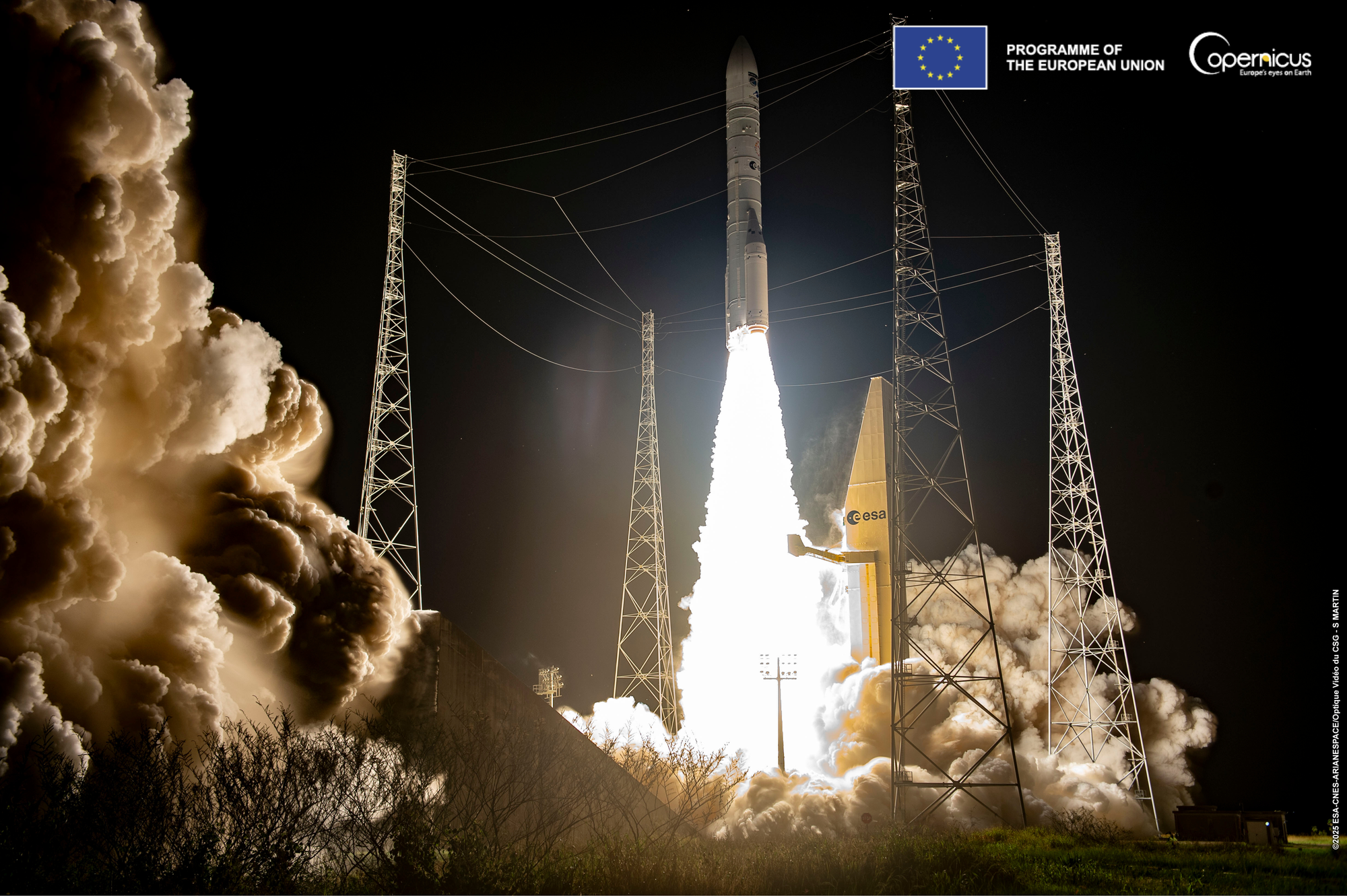Sentinel 5 ... Away!
The new spectroscopic instrument Sentinel-5A launched on August 12, 2025. It's ready to help us understand what's going on in our atmosphere.

One of most persistently-witty comic strips of this century (so far!) is the minimalist xkcd, in part because it doesn't actually have any characters (or, for that matter, much art). Instead, by using stick figures, it expands and explores ideas in their purest forms.
Tempted to bring a knife to a gun fight? Read this first:

So, in short, you've got to know what you're walking into before you can pick the right tool for the job.
This pretty much explains why Sweet Lightning has written more than one article about the small handful of atmosphere-monitoring satellites.
If our climate is changing, is our atmosphere part of the causal chain? If so, what gases are doing it? How common are they? How have they changed the composition of the atmosphere? How are they changing the atmosphere's capability to release and retain heat? Does climate change exist? Is climate change human-caused? Should we worry about GDP before we worry about climate?
Some of these questions will probably make you upset. Others not.
Here are ten consumer-level facts about the Sentinel-5A orbital instrument that every well-read person who cares about energy and the environment might want to know. We've put the key concepts in bold to make reading and retention easier:
- Sentinel-5A is not a standalone satellite. It's "bundled" in a host satellite called MetOp-SG A1, which contains other atmospheric instruments. If you don't know about the bundling, you may be confused by inaccurate reporting in the media.
- S-5A's mission is to improve global air quality monitoring.2
- The satellite uses a very advanced spectrometer to look at distribution and concentration of specific substances, including nitrogen dioxide, ozone, sulphur dioxide, carbon monoxide, methane, and formaldehyde.
- The spectrometer is broadly capable, and can measure other substances as well. This very remarkable device operates in the ultraviolet, visible, near-infrared, and short-wave infrared wavelengths.3 The data it accumulates measures all kinds of substances, even those we haven't thought to ask questions about yet. It is a highly flexible research tool that will accumulate finely-grained, broadly-based data on atmospheric composition.
- S-5A orbits take roughly 100 minutes each. Since the Earth turns underneath it, S-5A covers most of the globe daily.
- Its camera takes snapshots with a 7.5x7.5 kilometre resolution. This is ideal for monitoring city-scale, regional, and local pollution. You won't be able to see the methane coming from your badly-maintained and smelly backyard compost bin, but you can certainly find your city's landfill.
- You can look through the eyes of S-5A any time you want using a great visual interface called the "Copernicus Browser".4 (Be patient with this tool. It contains a lot of data, and takes a while to come up when you visit it. It looks blank at first.) The S-5A data also appears in other visual atmospheric-data browsers such as Panoply5 and SNAP6.
- You can download data to use in spreadsheets, graphs, and arguments, again through Copernicus, Panoply, and SNAP. This is a little harder, but not very hard. You'll need free accounts.
- Sentinel-5A should operate for seven or eight years. This is notably well past the commonly-cited 2030 set of climate change goals recommended by the IPCC and documented in the Paris Agreement.7 From this point of view, S-5A's timing is great. Think of it as pre-game coverage.
- For a comprehensive and relatively brief overview of space-based atmospheric monitoring, read this recent article in Chemical and Engineering news. It will give you the basic knowledge and vocabulary necessary to discuss the pros and cons of this method of measurement.8
Post-bits
- This article practically begs somebody to discuss the facts behind the environmental impacts of space launches. So, we'll do that! Watch for a coming Sweet Lightning piece on this topic. Don't expect us to weigh in on one side or the other: we'll just dig out the facts for you.
- Watch for an in-depth, nerdy article on Sentinel-5A in our paid subscriber pages. We'll show you how to see same-day data satellite data on our atmosphere.
- Here's our previous nerdy article on Sentinel-5P. And another on ISS methane data. If you know how to make a RESTful query, these are for you. As we said: nerdy.
Reading
- Munroe, Randall. “1980: What to Bring.” xkcd. Published June 18, 2017. https://xkcd.com/1890.
- Belderbos, Harriet. 2025. “Europe Launches Sentinel-5A to Improve Global Air Quality Monitoring.” Open Access Government, August 14. https://www.openaccessgovernment.org/europe-launches-sentinel-5a-to-improve-global-air-quality-monitoring/196941/.
- Czyzewska, Dominika, Philipp Köhler, and Yang Wang. 2023. EPS-SG Sentinel-5 Level 2 Product Format Specification.
- Copernicus Browser. n.d. “Copernicus Browser.” Accessed August 18, 2025. https://browser.dataspace.copernicus.eu/.
- Krishnakumar AP, dir. 2019. Panoply - An Atmospheric Data Visualization Tool. 12:58. https://www.youtube.com/watch?v=XQ9Rmiw6m1o.
- “SNAP - Earth Online.” n.d. Accessed August 18, 2025. https://earth.esa.int/eogateway/tools/snap.
- “The Paris Agreement | UNFCCC.” n.d. Accessed August 18, 2025. https://unfccc.int/process-and-meetings/the-paris-agreement.
- Samuels, Fionna. 2025. “A Satellite Constellation Launches a New Era of Air Quality Monitoring.” Chemical & Engineering News, January 21. https://cen.acs.org/environment/atmospheric-chemistry/satellite-constellation-launches-new-era/103/web/2025/05.
